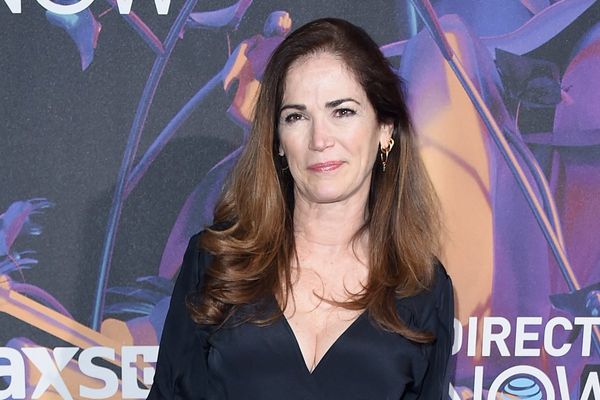L. Frank Baum was a sickly boy who was educated mostly at home, where he became a voracious reader. He soon combined this love of literature with an ability to create a lasting classic.
He had plenty of practice trying to make something that endures. In 1870 at 14, his wealthy father bought him a printing press. He began producing a magazine about their town. Then he tried a guide for stamp collectors and he started a mail order dealership. At 20, he was publishing a trade journal for the flourishing national poultry industry.
Meanwhile, he fell in love with the stage and his dad bought a chain of theaters in 1880, which he turned over to Frank to manage. Young Baum struggled to attract troupes and audiences. One theater even burned down. But the experience of writing, producing and acting would prove invaluable later.
Nothing hinted that in 1900, at 44, he would author "The Wonderful Wizard of Oz" (as it was originally titled), which would become one of the world's most popular books (with 13 sequels).
But themes in the book resonate today just as much as they did roughly 125 years ago.
"The Oz books appeal to children and adults alike because they convincingly affirm a positive, optimistic view: in his life and his fiction, Baum always hoped for the best and both saw and brought out the best in other people," wrote Katharine M. Rogers in "L. Frank Baum: Creator of Oz, A Biography."
Learn From Everything You Do, Like L. Frank Baum
Baum (who disliked his first name Lyman) grew up in Chittenango, N.Y., 15 miles east of Syracuse. He was the seventh of nine children. Only five survived to adulthood.
His father started as a barrel-maker, became a prosperous farmer, then got into the oil business when it was primarily used for kerosene lamps and lubricating wheel axles. The family had created a better product, but in the 1870s they struggled against the rising Rockefeller empire.
They had recovered by 1880, but Baum's dad was in a buggy accident in 1885. He died two years later. Frank had been on the road selling their products (giving him new marketing skills) when the family discovered that their company had been mismanaged by an employee and was nearly bankrupt.
Baum in 1882 married Maud Gage. Gage, like her mother, was a member of the movement for women's right to vote and a follower of the spiritual philosophy Theosophy. Both ideas influenced his writing. With two sons in 1888, they needed to make a better living and moved to the boomtown of Aberdeen in Dakota Territory, near members of the Gage family.
He opened a store that started out promising. But it went bankrupt. When it did, Baum in 1890 took over publishing a weekly newspaper, the Saturday Pioneer. The Pioneer faced competition from seven other weeklies and two dailies. His distinctive writing and thorough reporting enabled it to survive until a severe drought caused a depression. He sold the paper in 1891 and he and his family moved to Chicago, where he got a job as a reporter.
Hone Skills You Can Apply To Any Career
Chicago was an exciting place to be. It was a major commercial center that attracted publishers, writers, artists, architects, and other creative individuals who could apply their skills to businesses. The World Columbian Exposition of 1893, also known as the Chicago World's Fair, was the largest world's fair ever held at that time, full of wonders like the electricity that illuminated it.
Baum decided journalism didn't pay enough. And he heard there was a job opening for a traveling salesman for a wholesaler of china and glassware. So he studied the subject at the library and was hired as an expert. He became the top salesman by returning to merchants to help them with their displays.
He took advantage of the newly invented glass windows where they could place dressed mannequins. While he was waiting for his first novel to be published, he launched a trade magazine, The Show Window, in 1897 (which still exists as VMSD, which stands for visual merchandising and store design).
Baum had some novels and poetry published. A few were modestly successful when his first Oz book appeared in 1900. But Oz became the No. 1 bestseller for the next two years, selling 3 million copies before its copyright expired in 1956 (when the simplified title "The Wizard of Oz" became more popular). Baum created a musical version that ran on Broadway for 293 nights in 1903, which returned the following year and then went on tour.
Learn To Communicate With Different Audiences
How did Baum hit on a book with so much lasting power? Having worked in many different positions that built his sales skills, Baum became a master communicator. He knew how to connect with people. It didn't matter how. He might convince others to buy ads, oil, subscriptions or tickets. The same applied to attracting a broad audience to read his books.
Margie Warrell, leadership coach and author of "The Courage Gap: 5 Steps to Braver Action," told IBD that "Baum's stories inspire over time because they make complex ideas accessible. Courage is depicted as not being about grand gestures but more about being committed to a positive outcome than our fear of a negative one, requiring quiet perseverance, character, and commitment to a cause greater than ego gratification or insecurity alleviation."
Baum's characters are meaningful and understandable to everyone.
She notes that the Cowardly Lion's journey "is a metaphor for closing what I call the 'courage gap,' the space between fear and action. He is scared of stepping forward, but learns that courage was inside him all along. Leaders navigating negative challenges (can see) that fear is not a stop sign, but a signpost for growth."
Another key to the longevity of Baum's work? Choosing nuanced and important topics to explore — some even applying to today's AI age.
"Baum introduced complex philosophical questions into his children's books," Baum's biography author Rogers wrote. "He examined the nature of human identity from many angles, such as where do consciousness and personality come from and where in the body do they reside? He explored the boundary between machines and humans ... and how magic could be governed by clearly defined laws."
Create A Positive Legacy
Baum was always sickly. He died in 1919 at age 62 after moving to Hollywood to try unsuccessfully to make a silent film of "Wizard." He is buried in Forest Lawn in the suburb of Glendale, Calif. His publishers continued to have other authors write Oz books, but none of those or Baum's sequels was ever as successful as the original.
The 1939 film "The Wizard of Oz," starring Judy Garland, was ranked No. 2 in Variety's 2022 list of "The 100 Greatest Movies of All Time." "The joyous Technicolor classic has stood the test of time, gifting pleasure to multiple generations, while representing the gold standard against which all other cinematic enchantments are judged," it noted. "It has been a source of inspiration for many American fantasies, exploring themes of friendship, home and human flourishing."
When the Academy of Motion Pictures Museum in Los Angeles opened in 2021, "The Wizard of Oz" was chosen for extensive exhibits on how a movie is made, including many artifacts, manuscripts, and the innovative camera that was used to shoot it.
And Oz is getting yet another breath of life. In November 2024 the film "Wicked Part 1," based on the Broadway musical version of a novel by Gregory Maguire set in the world of Oz, became a global hit. Part 2 is scheduled for a November 2025 release.
L. Frank Baum's Keys
- Author of enduring classic, "The Wizard of Oz."
- Overcame: Many failures of his books and businesses.
- Lesson: "Imagination has brought mankind through the Dark Ages to its present state of civilization."







